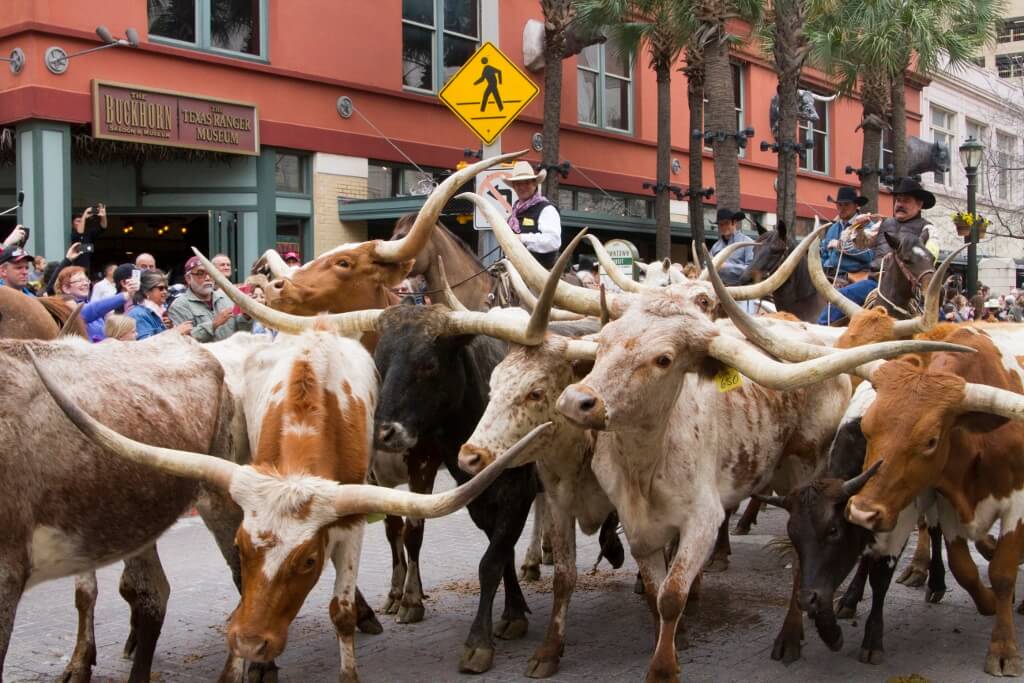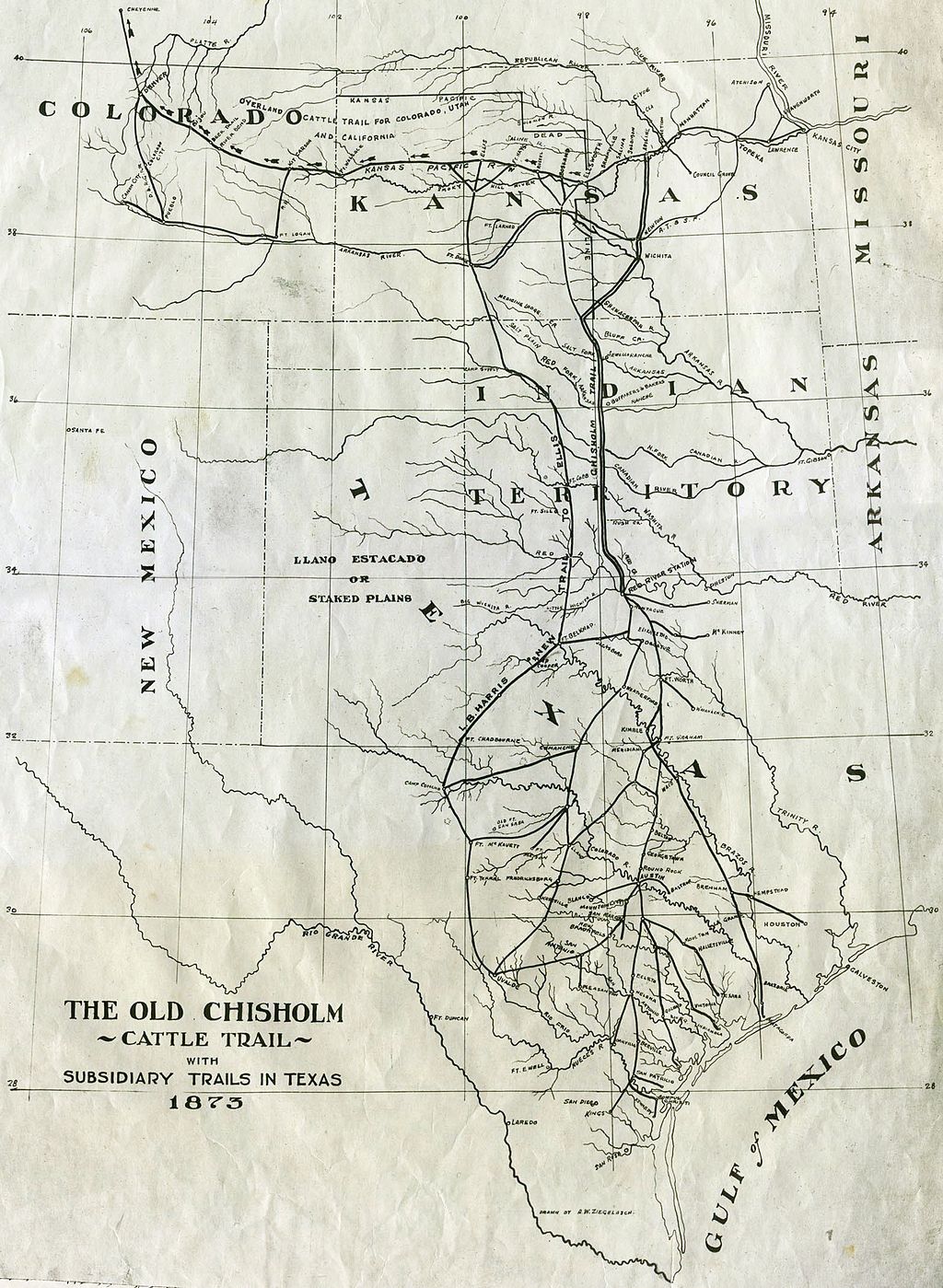Remembering the Old West
Few modern cities can boast that a herd of Longhorn cattle has been driven along its main streets. But San Antonio can: each February, in a tribute to the past, the city plays host to a cattle drive.

Longhorn cattle being driven through downtown San Antonio.
Image courtesy San Antonio Stock Show and Rodeo.
Between 1866 and 1885, nearly 6 million Longhorns were driven from south Texas, north along the Chisholm Trail to Abilene, Dodge City, and other Kansas cattle towns. Northern beef prices had risen sharply during the Civil War, while neglect of Texas’ ranches had left great herds of cattle roaming free on the plains. So in the early years of the drives, most of the cattle were shipped by rail from Kansas to Chicago’s slaughterhouses. Over time, however, increasing numbers of Texas cattle were shipped to stock newly opened northern ranges in Colorado, Montana, and Wyoming. A ranching boom in these states eventually resulted in falling northern beef prices. Texas ranchers ceased to find it profitable to drive cattle north, and the Chisholm Trail came to an end.

Longhorn cattle being driven through downtown San Antonio.
Image courtesy San Antonio Stock Show and Rodeo.
On the morning of Saturday, February 2, in honor of the opening of the San Antonio rodeo, a dozen cowboys herded 75 Longhorn cattle, beginning near Market Square through downtown San Antonio, past the Alamo to La Villita. In a nod to historical authenticity, the cattle on the drive were genetically identical to their 19th-century predecessors: they are owned by the Kimble Cattle Company, which raises Longhorns on 1300 acres in Karnes City, 60 miles south of San Antonio, according to the motto “Raising Walking History.” In one respect, however, the cattle that walked through San Antonio last week are very different from their 19th-century ancestors. Whereas in the 1880s a mature steer might sell for $20 on the range in Texas – less than a cowboy’s monthly wage – the Longhorns that paraded through San Antonio this year are worth up to $20,000 apiece.

Map of the Old Chisholm Cattle Trail, ca. 1873.
Image courtesy Wikimedia Commons.
Walking at a brisk pace, the Longhorns in this year’s cattle drive reached their destination in 30 minutes. In the 1870s, this would have been just the beginning of two long months on the dry and dusty plains of Texas and Oklahoma. Today’s cattle were more fortunate, for barely an hour after their walk through San Antonio they were back on their home pastures. For a brief time, however, the sight of Longhorn cattle passing in front of the Alamo provided a vivid reminder of one of the most colorful chapters in the history of the Old West.

